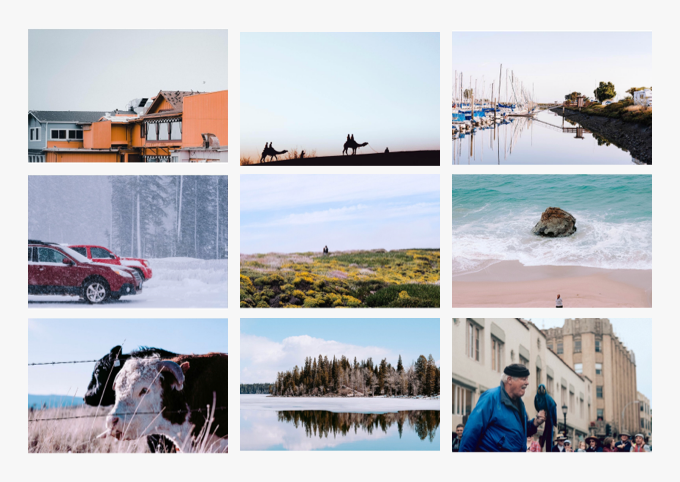Hi, I’m Tej!
By day, I'm an Interaction Designer at Google Search, wrestling with design challenges and championing user needs. By night (and early mornings!), I'm a referee for two tiny humans and a zookeeper for the 37 furry and feathered friends they've adopted in our Dublin, California backyard.
My design journey spans 12 years and includes adventures at Citrix, PayPal, and a design agency in India.
Want to know more? Find me on LinkedIn!

My roots lie in the lush landscapes of Coorg, India, but my journey led me to the vibrant city energy of Bangalore where I spent my formative years. In 2016, I jumped on an adventure, moving to the United States. After a stint in Raleigh, North Carolina, I found myself drawn to the SF Bay Area, where I've been happily rooted ever since.

Outside of product design
Today, I work as a product designer but I'm deeply fascinated about all design practices. I thrive on problem solving and connecting the dots.
I’m deeply committed to environmental sustainability and mindful consumption. In my free time, I enjoy exploring local farmers markets, kid-friendly hiking, and traveling. I’m currently working on a personal project of writing/illustrating books for my kids by drawing inspiration from my Coorg heritage.
I enjoy working with fabrics and textiles and love needlepoint having learnt the craft from my mother.

Learning
A big part of my life is my constant pursuit to never stop learning. Understanding complicated systems thoroughly excites me. In my latest role as a product designer working on an Analytics product, I’m very fascinated by trends and instincts that distort our perspective. I read Hans Rosling's Factfulness and it has had an impact in the way I think about the power of data. Inspired by this, I wanted to learn more about mastering data and did a course on Mastering Data and Driving Innovation at Stanford University.
Travel

After moving to the US, road trips are my favorite travel.
The longest one was Buffalo, NY to Key West, FL with my mom. All these travels have taken me to over 200 Airbnbs.
Management (former role at Citrix)
Inspired by my many wonderful managers, I took on a design manager role from 2019 - 2021. I worked on continuously trying to master these processes:
- Good hiring and onboarding
- Planning
- Retrospective
- Nurturing a healthy culture
Hiring and Onboarding
At Citrix, we were constantly seeking talented designers to join the team and I did the following:
At Citrix, we were constantly seeking talented designers to join the team and I did the following:
- Formed close partnerships with the recruiting team to identify, interview, and hire the best people. This was especially helpful in case of hiring in remote locations.
- Provided prospective candidates an understanding of the role, what it needs, and why it's exciting.
- Made the time to personally connect with candidates.
- Sought out trusted recommendations.
- Strived to build a diverse team.
 Happy faces!
Happy faces!Planning
Our product area followed a quarterly planning cycle. At the beginning of each quarter, representatives of all the cross-functional teams met for a 1 week long intensive, immersive workshop meetings. The participants were leaders from product management, engineering, data science, marketing, legal, security and design. I co-represented the design team along with the design program manager.
Our product area followed a quarterly planning cycle. At the beginning of each quarter, representatives of all the cross-functional teams met for a 1 week long intensive, immersive workshop meetings. The participants were leaders from product management, engineering, data science, marketing, legal, security and design. I co-represented the design team along with the design program manager.

A planning session in progress
To kick off every quarter, I participated in a series of dynamic planning sessions held in Santa Clara and Bangalore. These sessions brought together stakeholders from across the organization to discuss their design needs for Citrix Analytics.
My role was to capture these requests, evaluate their scope, and align them with my team's bandwidth. This iterative process culminated in a detailed plan that clearly articulates our priorities, individual responsibilities, and projected timelines for each project.
My role was to capture these requests, evaluate their scope, and align them with my team's bandwidth. This iterative process culminated in a detailed plan that clearly articulates our priorities, individual responsibilities, and projected timelines for each project.
Retrospectives

Every two weeks, I facilitated a retrospective meeting to encourage a culture of learning and growth within the team. We leveraged Jira story points to assess the accuracy of our initial estimations and identify any patterns of over- or under-estimation.
The discussions centered around three key questions:
To ensure a productive dialogue, I distributed feedback forms in advance, allowing team members to thoughtfully reflect on their experiences.
The discussions centered around three key questions:
- What went well?
-
What didn't go well?
-
What could we have done better?
To ensure a productive dialogue, I distributed feedback forms in advance, allowing team members to thoughtfully reflect on their experiences.
Nurturing a healthy culture
I believe in empowering the team with creative freedom. To achieve this, we incorporated a "free sprint" at the end of every quarter. This dedicated time allowed team members to pursue passion projects, experiment with new ideas, and ultimately contribute to a more innovative and engaging work environment.
I believe in empowering the team with creative freedom. To achieve this, we incorporated a "free sprint" at the end of every quarter. This dedicated time allowed team members to pursue passion projects, experiment with new ideas, and ultimately contribute to a more innovative and engaging work environment.

Ideas being presented after a “free” week